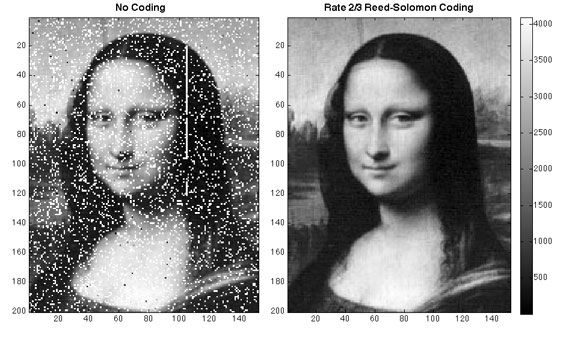Mona Lisa Travels by Laser, to Space And Back Again
To test the reaches of laser communication, NASA beamed a digital image of Leonardo da Vinci’s famous portrait to a satellite orbiting the moon
/https://tf-cmsv2-smithsonianmag-media.s3.amazonaws.com/filer/20130125122014Mona-Lisa-web1.jpg)
Art buffs are not the only ones intrigued by Leonardo da Vinci’s Mona Lisa. In a fun experiment in 2005, a group of researchers from the University of Amsterdam analyzed Mona Lisa’s famous smile. They ran a scanned reproduction of the painting through “emotion recognition” software, which concluded that Mona was precisely 83 percent happy, 9 percent disgusted, 6 percent fearful, 2 percent angry, 1 percent neutral—and completely unsurprised.
In 2010, scientists in France used X-ray fluorescence spectrometry on the painting and found that da Vinci applied layers upon thin layers of glazes and paints to achieve the subject’s flawless complexion. Then, this past year, Italian archaeologists exhumed the skeletal remains of Lisa Gherardini, the suspected sitter for the portrait, in Florence, in hopes of identifying, once and for all, the real Mona Lisa.
And now even NASA has taken an interest in da Vinci’s coy lady.
In an experiment in laser communication, scientists at the Next Generation Satellite Laser Ranging (NGSLR) station at NASA’s Goddard Space Flight Center in Greenbelt, Maryland, beamed a digital image of the Mona Lisa to the Lunar Reconnaissance Orbiter (LRO) some 240,000 miles away.
“This is the first time anyone has achieved one-way laser communication at planetary distances,” says David Smith of the Massachusetts Institute of Technology, in a recent press release. Smith is the Lunar Orbiter Laser Altimeter’s principal investigator.
NASA scientists, up until this point, have used radio waves to track and communicate with satellites traveling outside of Earth’s orbit. Going forward, however, they are considering lasers, which can transmit more data at a faster rate than radio signals.
The LRO, a satellite that has been orbiting the moon and mapping its surface since 2009, provided the perfect test case. The spacecraft is the only one currently outside of Earth’s orbit that is capable of receiving lasers; it can be tracked using both lasers and radio.
But of all images to send, why the Mona Lisa?
“We chose the Mona Lisa because it is a familiar image with a lot of subtleties, which helped us to see the effect of transmission errors,” says Xiaoli Sun, a scientist at NASA Goddard and lead author of a recent paper about the project in Optics Express.

The digital image essentially rode “piggyback” on laser pulses that are regularly beamed at LRO to follow its position in space. NASA describes the process in more detail in its press release:
Precise timing was the key to transmitting the image. Sun and colleagues divided the Mona Lisa image into an array of 152 pixels by 200 pixels. Every pixel was converted into a shade of gray, represented by a number between zero and 4,095. Each pixel was transmitted by a laser pulse, with the pulse being fired in one of 4,096 possible time slots during a brief time window allotted for laser tracking. The complete image was transmitted at a data rate of about 300 bits per second.
The satellite pieced together the full image and then sent it back via radio waves. The portrait was not transmitted perfectly; natural disturbance of the laser as it passed through the Earth’s atmosphere account for the blank pixels in the image, shown above. (At one point while the image was being sent to LRO, an airplane was detected within five degrees of the laser, and the laser was blocked for that time, which explains the vertical white streak running through the image.) Sun and his team cleaned up the image using what’s called Reed-Solomon error-correction coding.
The experiment will likely be the first of many. “This pathfinding achievement sets the stage for the Lunar Laser Communications Demonstration (LLCD), a high data rate laser-communication demonstration that will be a central feature of NASA’s next moon mission, the Lunar Atmosphere and Dust Environment Explorer (LADEE),” says Goddard’s Richard Vondrak, the LRO deputy project scientist, in the press release.
On a simpler note, though, I can’t help but wonder: what would da Vinci think of Mona Lisa’s cosmic journey?
/https://tf-cmsv2-smithsonianmag-media.s3.amazonaws.com/accounts/headshot/megan.png)
/https://tf-cmsv2-smithsonianmag-media.s3.amazonaws.com/accounts/headshot/megan.png)